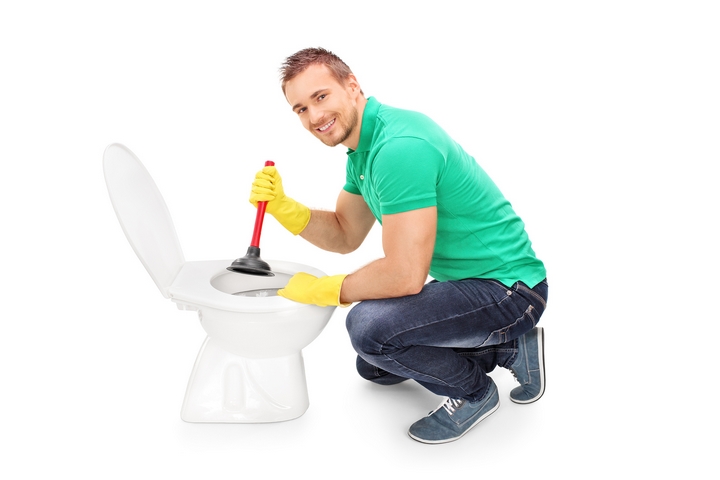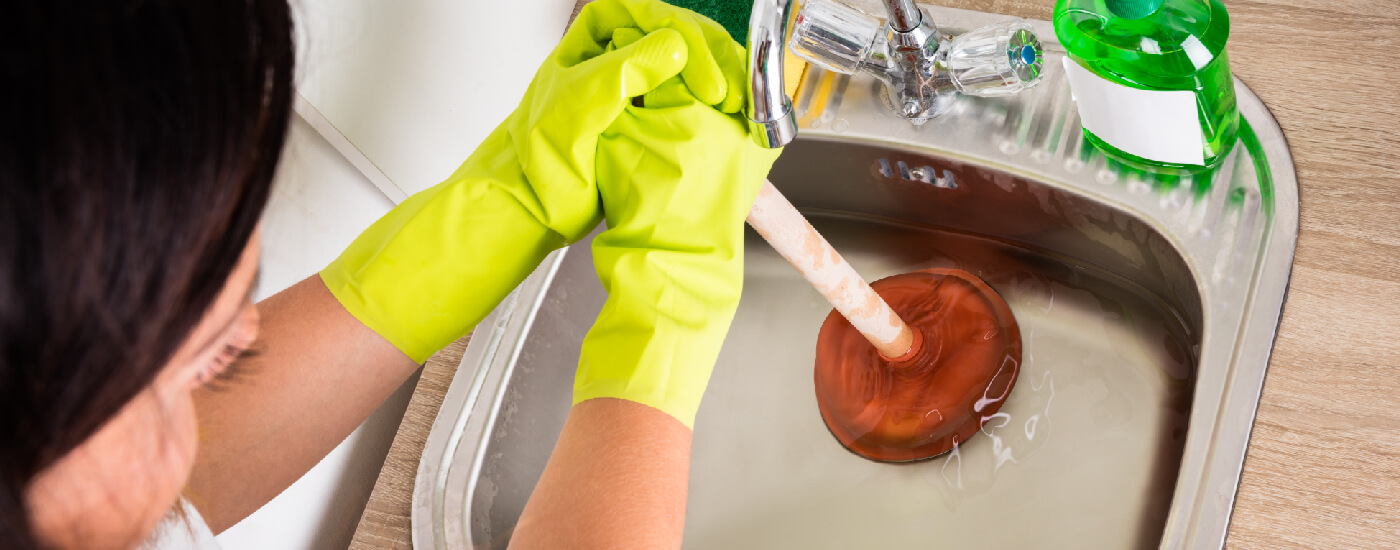Improving Plungers and Drain Cleaner: Expert Methods
Improving Plungers and Drain Cleaner: Expert Methods
Blog Article
Nearly everybody has their own perception about Here's How to Correctly Use a Toilet Plunger.

Intro
Proper maintenance of home drains is crucial for protecting against blockages and guaranteeing smooth water flow. One of the key tools in every property owner's toolkit is the bettor, along with various drain cleansers developed to take on persistent obstructions successfully. This article explores how to use plungers and drain cleansers efficiently to maintain your drains pipes flowing freely.
Section 1: Understanding Bettors
Sorts of Plungers
There are a number of kinds of bettors readily available, each developed for various sorts of drains pipes and blocks. One of the most usual kinds consist of cup plungers, flange bettors, and accordion plungers.
How Plungers Job
Bettors service the principle of developing pressure and suction to remove clogs. When effectively used over a drainpipe, they create a vacuum that can take out particles or break up blockages.
Selecting the Right Bettor
Selecting the ideal plunger relies on the kind of drain and the nature of the obstruction. Mug plungers are perfect for sinks and tubs, while flange bettors are much better suited for bathrooms as a result of their design.
Typical Blunders with Plungers
Preventing these errors makes certain efficient plunging: inappropriate seal around the drainpipe, insufficient pressure, and unclear bordering debris.
Area 2: Making Use Of Plungers Efficiently
Preparation
Before plunging, guarantee the bettor covers the drainpipe entirely and develops a tight seal. Clear any noticeable debris around the drain opening.
Method
Beginning with gentle plunging movements to build suction. Rise pressure slowly, using a steady rhythm. Repeat as needed up until the drainpipe clears.
Fixing Tips
If diving doesn't work, try readjusting the seal, using oil jelly for a much better seal, or making use of a different kind of plunger.
Area 3: Recognizing Drain Cleaning Company
Types of Drainpipe Cleaners
Drain cleaners can be chemical or chemical. Chemical cleaners make use of strong chemicals to dissolve blockages, while chemical cleaners utilize natural enzymes to break down raw material.
Just How Drainpipe Cleaning Company Work
Chemical cleaners respond with clogs to dissolve them, while enzymatic cleansers break down organic materials like hair and grease without harming pipes.
Security Factors to consider
Always put on handwear covers and eye protection when using chemical drain cleaners. Make certain sufficient air flow and follow manufacturer directions very carefully.
Eco-Friendly Alternatives
Take into consideration making use of vinegar and cooking soda or enzyme-based cleaners for green choices that are safer for pipelines and the atmosphere.
Section 4: Making Use Of Drain Cleansers Effectively
Application Strategies
Put chemical cleaners directly into the drainpipe opening. Permit them to work for the advised time prior to flushing with hot water. Enzymatic cleaners need to sit overnight.
Safety measures
Stay clear of mixing various kinds of cleansers, as this can create hazardous fumes. Never utilize chemical cleansers in conjunction with a bettor, as spilling can happen.
Handling Persistent Clogs
For persistent obstructions, consider using a pipes snake or calling an expert plumbing to stop damage to pipelines.
Verdict
In conclusion, comprehending just how to make use of plungers and drainpipe cleansers efficiently is necessary for keeping healthy pipes systems. By picking the right tools and techniques, homeowners can deal with small clogs and prevent major plumbing concerns down the line.
How To Properly Use A Plumbing Snake To Clear Drains
When any drain clogs in our home arise, we tend to gravitate toward the plunger and little else. In cases where the plunger and its vacuum-created pressure are not able to clear clogs, many immediately move to harmful chemicals or simply call their plumber to fix the issue.
we’re happy to help with all drain cleaning needs and concerns. This includes informing you on a few other home remedies you may have at your disposal for minor to moderate clogs, one of which is the use of a plumbing snake. Many people have never used one of these before – let’s go over the steps to take when your drain clogs and you have a plumbing snake available.
Attempt Plunger Use
The first step here, as we noted above, should indeed be to grab your plunger when you notice a drain clog and attempt to resolve it this way. If you’re unsure how to use a particular type of plunger, our plumbers can answer any questions you have. If this doesn’t do the trick, however, you move on to the snake.
Locate And Prepare Snake
A plumbing snake is a metal or plastic device that’s generally about a quarter of an inch thick. It’s design with significant extensions, meant to reach down into your clogged drain and push the clog out. Snakes also contain drain augers that will latch onto and push stubborn blockages.
If your plunger doesn’t clear a clog, locate your snake and bring it to the drain in question. We also recommend keeping a bucket nearby to collect the clog once you pull it out, plus we’d advise wearing goggles and possibly protective gloves.
Feed Snake
Once you’re ready to go, feed the snake slowly down the drain, using the crank device it comes with to keep it moving until it finds the clog. Once this happens, much of the clog will be latched onto the coil so you can pull it out, while the rest will simply break up and flow downward.
Detach Debris
Remove the snake slowly from the drain, and once you’ve done so, pick off any debris that’s stuck to the coil. This is another area where wearing gloves is a must.
Flush Drain
Finally, take a few minutes to ensure the snake has done its job correctly. If you’ve been using it on a toilet, flush the toilet a couple times and make sure everything flows well. If you’ve used it on a different drain, flush it with some room temperature water.
https://www.mybuddytheplumber.com/blog/how-to-properly-use-a-plumbing-snake-to-clear-drains/

Application Strategies
Put chemical cleaners directly into the drainpipe opening. Permit them to work for the advised time prior to flushing with hot water. Enzymatic cleaners need to sit overnight.
Safety measures
Stay clear of mixing various kinds of cleansers, as this can create hazardous fumes. Never utilize chemical cleansers in conjunction with a bettor, as spilling can happen.
Handling Persistent Clogs
For persistent obstructions, consider using a pipes snake or calling an expert plumbing to stop damage to pipelines.
Verdict
In conclusion, comprehending just how to make use of plungers and drainpipe cleansers efficiently is necessary for keeping healthy pipes systems. By picking the right tools and techniques, homeowners can deal with small clogs and prevent major plumbing concerns down the line.
How To Properly Use A Plumbing Snake To Clear Drains
When any drain clogs in our home arise, we tend to gravitate toward the plunger and little else. In cases where the plunger and its vacuum-created pressure are not able to clear clogs, many immediately move to harmful chemicals or simply call their plumber to fix the issue.
we’re happy to help with all drain cleaning needs and concerns. This includes informing you on a few other home remedies you may have at your disposal for minor to moderate clogs, one of which is the use of a plumbing snake. Many people have never used one of these before – let’s go over the steps to take when your drain clogs and you have a plumbing snake available.
Attempt Plunger Use
The first step here, as we noted above, should indeed be to grab your plunger when you notice a drain clog and attempt to resolve it this way. If you’re unsure how to use a particular type of plunger, our plumbers can answer any questions you have. If this doesn’t do the trick, however, you move on to the snake.
Locate And Prepare Snake
A plumbing snake is a metal or plastic device that’s generally about a quarter of an inch thick. It’s design with significant extensions, meant to reach down into your clogged drain and push the clog out. Snakes also contain drain augers that will latch onto and push stubborn blockages.
If your plunger doesn’t clear a clog, locate your snake and bring it to the drain in question. We also recommend keeping a bucket nearby to collect the clog once you pull it out, plus we’d advise wearing goggles and possibly protective gloves.
Feed Snake
Once you’re ready to go, feed the snake slowly down the drain, using the crank device it comes with to keep it moving until it finds the clog. Once this happens, much of the clog will be latched onto the coil so you can pull it out, while the rest will simply break up and flow downward.
Detach Debris
Remove the snake slowly from the drain, and once you’ve done so, pick off any debris that’s stuck to the coil. This is another area where wearing gloves is a must.
Flush Drain
Finally, take a few minutes to ensure the snake has done its job correctly. If you’ve been using it on a toilet, flush the toilet a couple times and make sure everything flows well. If you’ve used it on a different drain, flush it with some room temperature water.
https://www.mybuddytheplumber.com/blog/how-to-properly-use-a-plumbing-snake-to-clear-drains/

We had been made aware of that editorial on through a friend on our other blog. Do you know about anybody else who is truly interested in the topic? Do not hesitate to share it. I value your readership.
Click Here Report this page